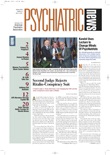The 50th anniversary (1894) of the organization now known the American Psychiatric Association was particularly memorable because of an annual meeting address by Dr. S. Weir Mitchell, a prominent Philadelphia neurologist. Knowing his remarks would be critical, Mitchell had initially declined the invitation to speak, but accepted after repeated requests.
Mitchell’s speech was scathing. He said that the asylum hospital boards were ineffective and often composed of political appointees but no physicians. “Your ways are not our ways,” he told the assembled superintendents. He accused them of being monarchs in their hospitals, separating themselves and their institutions from medicine, producing no scientific work, conducting little teaching with the staff and medical students, and doing nothing to combat the stigma of mental illness.
Mitchell’s address capped 20 years of the neurologists’ hostility to the psychiatric world, which then was contained entirely within mental hospitals. In 1875 the American Neurological Association had been organized, and the Journal of Nervous and Mental Disease was its official journal. The neurologists perceived mental illness as a brain disease, falling within their professional purview. They criticized the operation of the mental hospitals as nontherapeutic, nonscientific, and behind the times, compared with their European counterparts. The neurologists made numerous efforts to achieve reform, including petitioning state legislatures to investigate the hospitals.
A particular focus of the neurologists’ attack was Dr. John Gray, the superintendent of the Utica State Hospital in New York and long-time editor of the American Journal of Insanity. Gray, a witness for the prosecution in the 1881 trial of Charles Guiteau for the assassination of President James Garfield, had presented testimony that differed with that of Dr. Edward Spitzka, a New York neurologist and defense witness.
The feud reached an apex in 1878, when Dr. Grissom, a North Carolina superintendent, delivered an address at the annual meeting of the superintendents in which he attacked Dr. William Hammond, a prominent New York neurologist. Without naming him, Grissom referred to him as a “moral monster. . .whose bowels are bags of gold.”
Grissom’s intemperate remarks were challenged by another superintendent who introduced a resolution of censure against him, but the association tabled the resolution. After the American Journal of Insanity published Grissom’s paper, Hammond sued for libel, but Gray said that since no action had been taken by the association, the journal was released from responsibility. The suit apparently died.
The superintendents’ response to Mitchell’s condemnation was mild, and an editorial in the American Journal of Insanity even offered faint praise. The speech heralded a rapprochement between the two organizations. In 1896 Dr. Bernard Sachs, a New York neurologist, presented the annual address at the Medico-Psychological Association in a placating tone, and relations improved. In 1905 two psychiatrists, Dr. Adolf Meyer and Dr. William White, were named advisory consultants to the Journal of Nervous and Mental Disease.
The union of neurologists and psychiatrists has continued to solidify through the years, marked most recently by our celebration of the Decade of the Brain and research into the mysteries—and promises—of neuroscience. ▪
